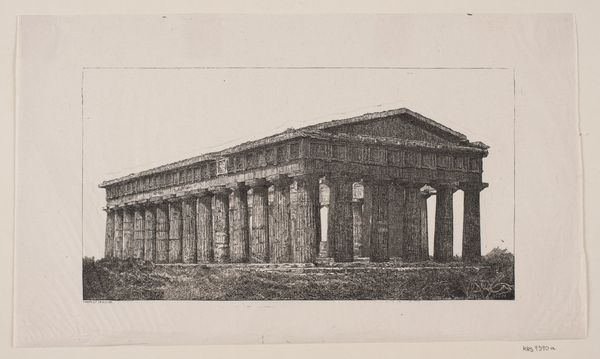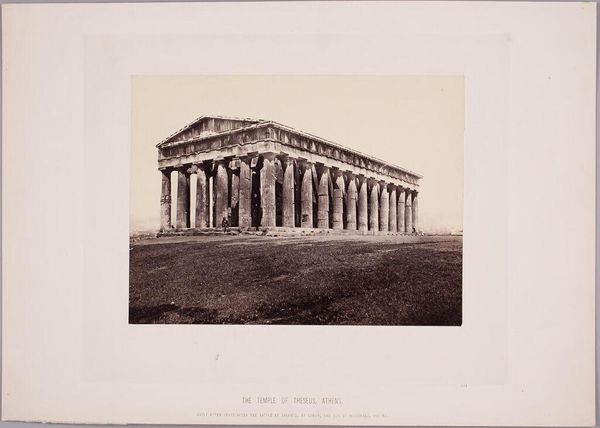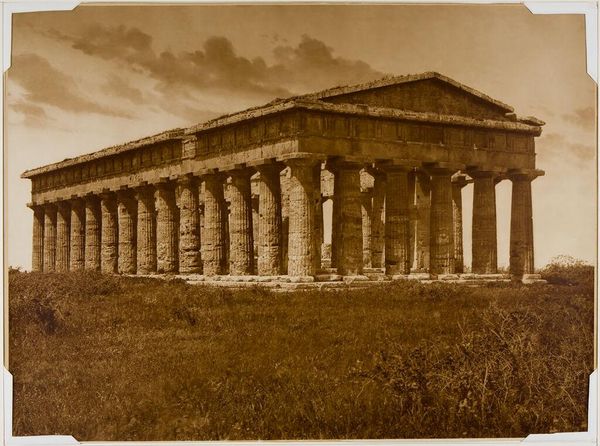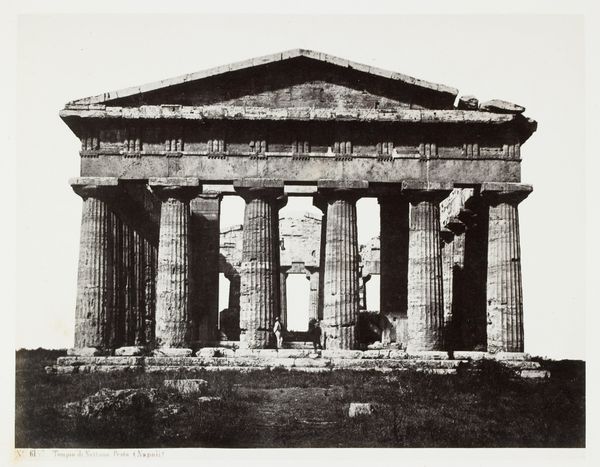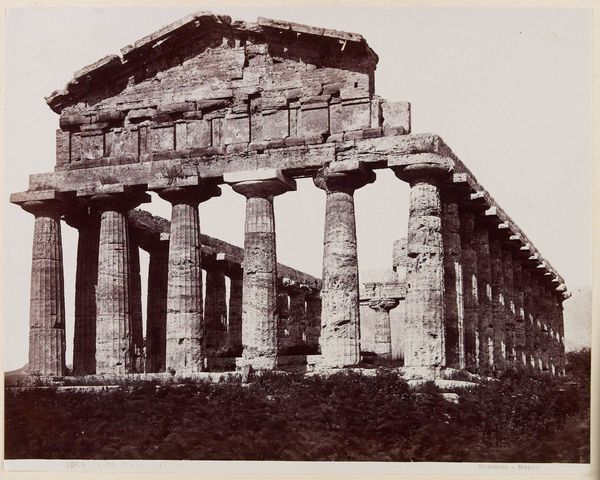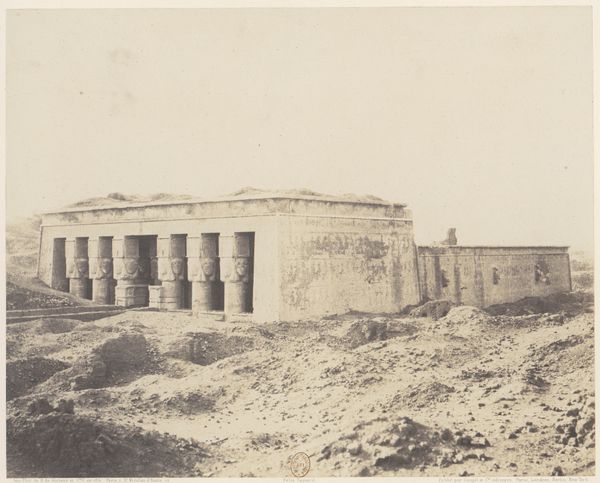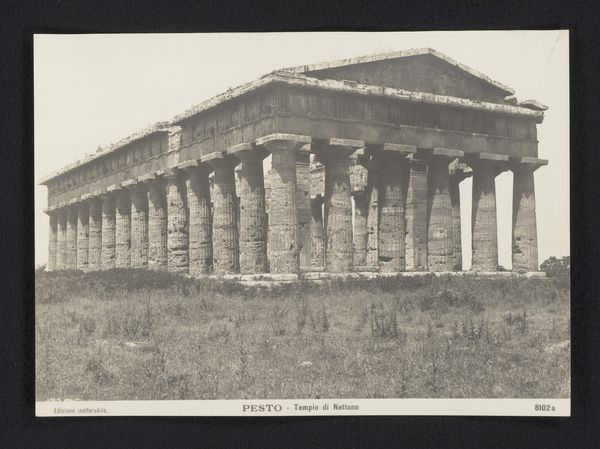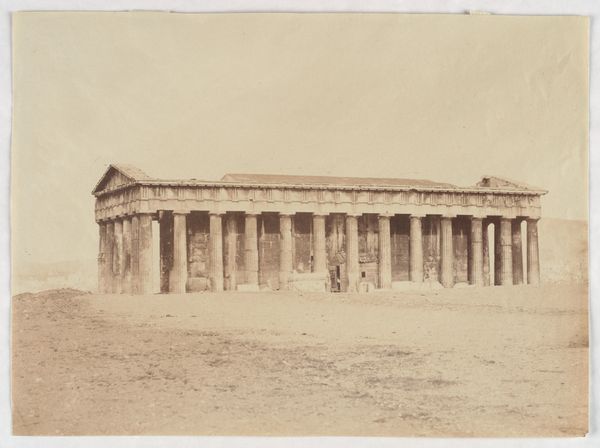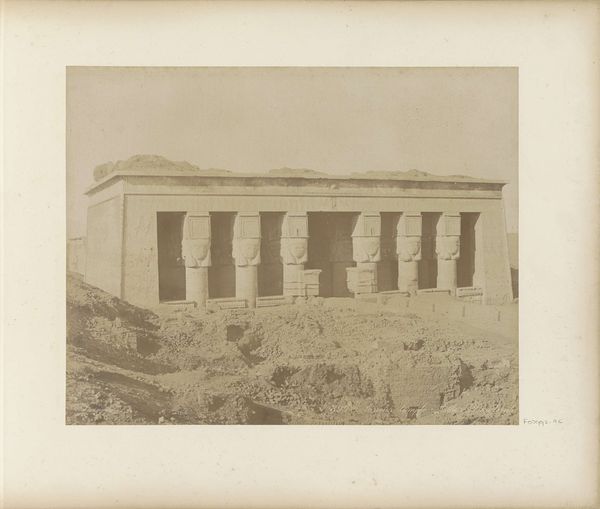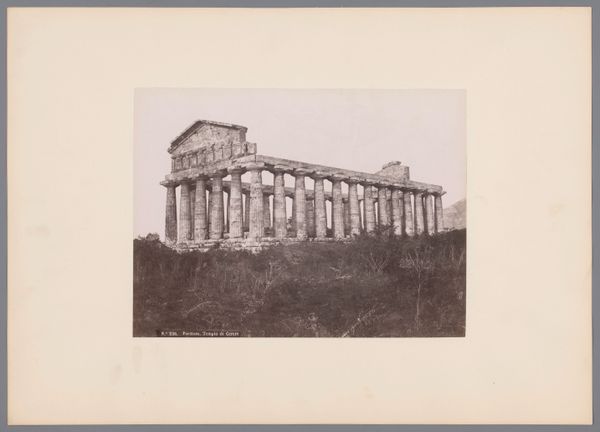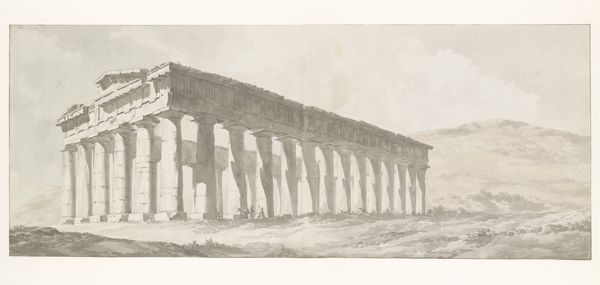
albumen-print, public-art, photography, albumen-print, architecture
#
albumen-print
#
architectural landscape
#
landscape
#
classical-realism
#
public-art
#
historic architecture
#
photography
#
ancient-mediterranean
#
italy
#
public art photography
#
albumen-print
#
architecture
#
realism
Dimensions: 7 11/16 x 10 1/16 in. (19.53 x 25.56 cm) (image)10 7/8 x 13 7/8 in. (27.62 x 35.24 cm) (mount)
Copyright: Public Domain
Editor: Here we have Giorgio Sommer's "Tempio di Nettuno" from the 19th century, captured in an albumen print. It has this wonderfully somber, classical feel... What do you see in this piece, especially considering its historical context? Curator: It’s compelling, isn’t it? Sommer’s image captures the Temple of Neptune at a time when photography was becoming a tool for documenting and, arguably, possessing the past. Consider the act of photographing such a monument. It's not merely an artistic endeavor; it's also a social and political one. These images circulated widely, shaping perceptions of ancient Italy, particularly among educated elites who often embarked on Grand Tours. What purpose do you think images like this served back then? Editor: I guess it was a way to bring the grandeur of these ancient sites to people who couldn't travel. Almost like visual tourism, reinforcing a certain image of Italy's glorious past? Curator: Precisely! And that "glorious past" was strategically framed. The focus on classical ruins speaks to a specific desire to connect with a perceived golden age, often overlooking the complexities of Italian history. How do you think the composition – the angle, the light – contributes to that idealization? Editor: The low angle makes the temple feel imposing, and the soft light kind of romanticizes the decay, lending this feeling of awe but also melancholy, you know? It’s interesting to think about the power of a single image to shape understanding. Curator: Absolutely. It’s a curated view of history, impacting how we perceive not just the monument itself, but also the cultures and powers that have intersected with it over centuries. Looking at it, one is left wondering what other histories are excluded through this romantic perspective. Editor: Wow, I hadn't considered that it's really framing history. I'll definitely think about the politics of images and their cultural influence from now on. Thanks! Curator: My pleasure! I’m glad I could shed some light on those dynamics.
Comments
No comments
Be the first to comment and join the conversation on the ultimate creative platform.
